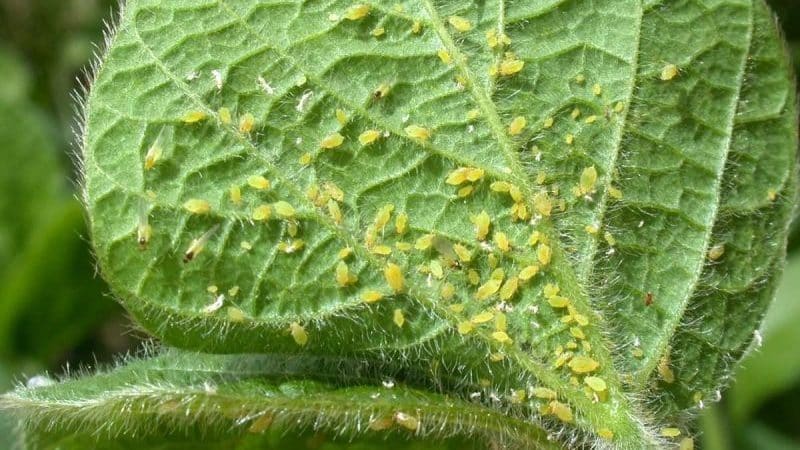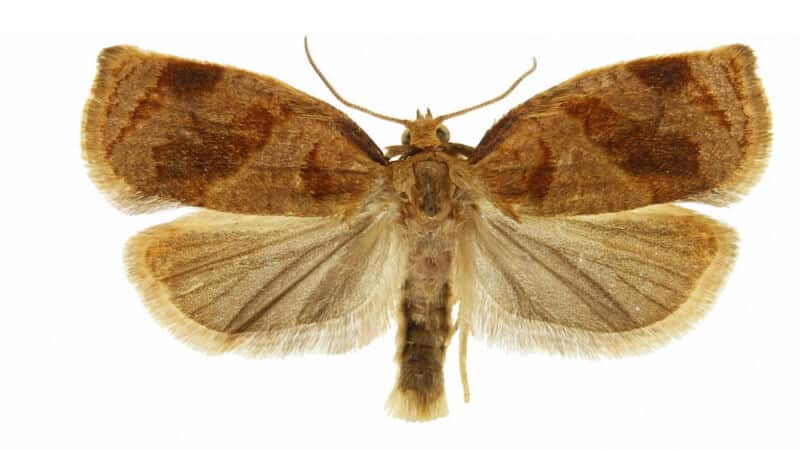Diseases and pests of gooseberries and methods of combating them
Diseases and pests are the main causes of crop loss and death of fruit and berry plants. Gooseberries are no exception. Pests that settle on leaves, shoots and berries, without timely measures taken, reduce the winter hardiness of gooseberries, lead to the drying out of its branches, roots and greenery, and the dropping of flowers and shoots.
Despite the fact that new varieties and hybrids with high immunity are constantly appearing, there are no plants with absolute resistance to all infections. To save gooseberries, it is important to learn how to correctly identify diseases and know methods of controlling and preventing pests and diseases.
Common gooseberry diseases and methods of combating them
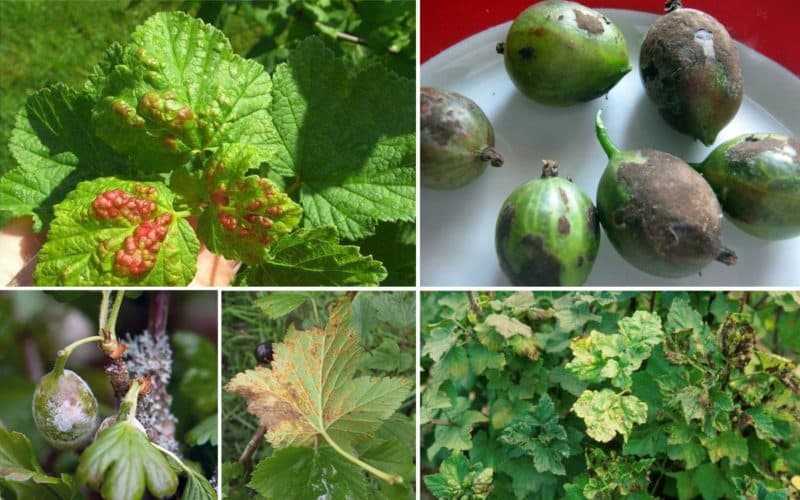
Gooseberry diseases reduce the yield and frost resistance of the plant, and with prolonged exposure lead to its death.
Note! Gooseberry affects the same infections as currants.
There are several common causes for all diseases:
- non-compliance with care rules;
- weeds;
- temperature changes;
- pests;
- contaminated soil, garden tools, planting material.
Powdery mildew
Powdery mildew is one of the most common gooseberry diseases. Its causative agent is a parasitic fungus. Sometimes it even affects varieties and hybrids that are resistant to infection.
The following factors are considered to be the cause of the spread of the disease:
- high humidity and low temperature;
- high temperature in dry weather;
- lack of sunlight;
- poor air circulation;
- abundance of weeds.
Powdery mildew is not difficult to recognize. A number of symptoms indicate damage:
- leaves and shoots become covered with a white coating, which can be easily removed by wiping the affected surface;
- gradually the plaque passes to the ovaries and berries, covering the entire surface of the affected parts of the plant;
- over time, the plaque becomes denser, then turns brown, turning into dark spots that resemble felt to the touch;
- damaged shoots stop growing, bend and wither;
- leaves dry out and curl;
- the fruits crack and fall off.
Sick plants lose their harvest. Their photosynthesis process deteriorates, which is why they stop developing. The infection also has a negative effect on winter hardiness, depriving the gooseberry of the ability to withstand severe frosts. Without timely treatment, the bush dies in 2-3 years.
To get rid of the disease, all affected parts are removed from the plant, taken away from the site and burned.
Then the gooseberries are sprayed with antifungal agents. Fungicides, for example, Topaz, are considered the most effective. The disadvantages of such drugs are toxicity and the inability to eat fruits after processing. They are resorted to if the disease is advanced and gentler methods do not help.
How to deal with powdery mildew using safe methods:
- Copper sulfate solution. Prepared from 1 tbsp. l. vitriol and 10 liters of water.
- Soda ash with soap. Add 50 g of soda ash and 0.5 pieces of grated laundry soap to a bucket of water. After the ingredients are dissolved, the bush is sprayed with the product.
- Mullein. 1 kg of mullein is diluted in 2 liters of water. The mixture is infused for 3 days.Then dilute 9 liters of water and use it to spray diseased bushes.
- Iodine with whey. 2 liters of whey and 30 drops of iodine are poured into a 10 liter bucket. The remaining volume is filled with water.
The products are not only sprayed on infected shrubs, but also on the plants in the neighborhood. It is also recommended to water the soil around the gooseberries.
To prevent the development of the disease, sanitary pruning is carried out annually, the soil around the bush is mulched, watering rules are followed, and the soil is not thickened. planting gooseberries. As a preventative treatment, as soon as the snow melts, the bushes are scalded with boiling water, watering the plant itself and the soil around it. Then spray with a solution of copper sulfate.
Rust
Glass rust - another fungal disease of gooseberries. If left untreated, it returns year after year and causes leaves and berries to fall off.
Rust has characteristic symptoms:
- gooseberry leaves become covered with rusty spots, on which light orange boxes with spores form;
- the shape of the leaf plates changes and becomes ugly;
- greens fall from the bush ahead of schedule;
- the berries become small, take on an irregular shape, dry out and fall off.
The fungus lives on the affected leaves all summer. Overwinters on fallen greenery. The wind spreads to other crops and weeds.
To combat rust, fungicides or folk remedies are used. Often, to get rid of the problem, 3 times treatment with 1% Bordeaux mixture is enough.
To prevent plant infection, fallen leaves are collected and burned in the fall. Weeds are removed around the bush and the soil is mulched.
Advice. The best prevention of rust is the choice of varieties that are resistant to it: African, Isabella, Krasnoslavyansky, Yantarny, Chernomor.
Anthracnose
Anthracnose is caused by a fungal infection. It affects the leaves, causing them to fall off. Because of this, photosynthesis deteriorates, shoot growth stops, the taste of berries deteriorates and their quantity decreases.
To avoid undesirable consequences, it is important to identify the disease in a timely manner. It has the following characteristics:
- leaf plates are covered with small dark brown spots of irregular shape;
- gradually the spots increase and merge;
- the leaves dry out and fall off.
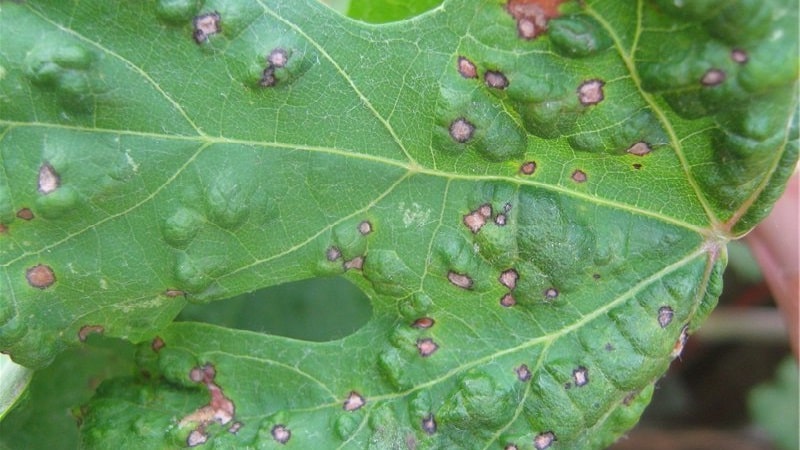
In the early stages of the disease, gardeners prefer to do without serious chemicals, using the following methods:
- Copper sulfate solution. Dissolve 40 g of copper sulfate in 10 liters of water. This remedy is used at the initial stage of disease development.
- Bordeaux liquid. The bushes are treated with a 1% solution before flowering, immediately after it, 2 weeks after flowering and after harvesting. Repeated treatment saves plants and prevents infection next year.
- Ash. Take 1 kg of ash per bucket of water. The mixture is infused for 3 days, after which 1 piece of grated laundry soap is added. The gooseberries are sprayed with the composition every week until the problem is resolved.
Before treating with any preparations, the affected leaves are torn off and burned. Not only the plants themselves are sprayed with medicinal agents, but also the soil around them.
To prevent infection of gooseberries, in the spring the bushes are scalded and treated with copper sulfate. Be sure to follow the rules of watering, carry out sanitary pruning and remove weeds.
This is interesting:
How to treat tomatoes with Bordeaux mixture - step-by-step instructions for beginners.
How to feed tomatoes with boric acid, iodine and ash.
How to properly apply copper sulfate against late blight on tomatoes.
Septoria
Septoria is also called white spot. The causative agent of the disease is a fungus. The disease leads to premature leaf loss and impaired photosynthesis.
Septoria is recognized by the following signs:
- leaf blades are covered with a large number of small round light gray spots with a dark border;
- later, black dots appear on the spots, which are fungal spores;
- leaves curl and dry out.
To get rid of the disease, pluck the affected greenery from the bush and collect the leaves that have fallen off. Plants are sprayed with a solution of copper sulfate or Bordeaux mixture.
To reduce the risk of infection, all fallen leaves are removed and burned in the fall. The soil is loosened after each watering. Be sure to use fertilizers containing manganese, boron, zinc, and copper.
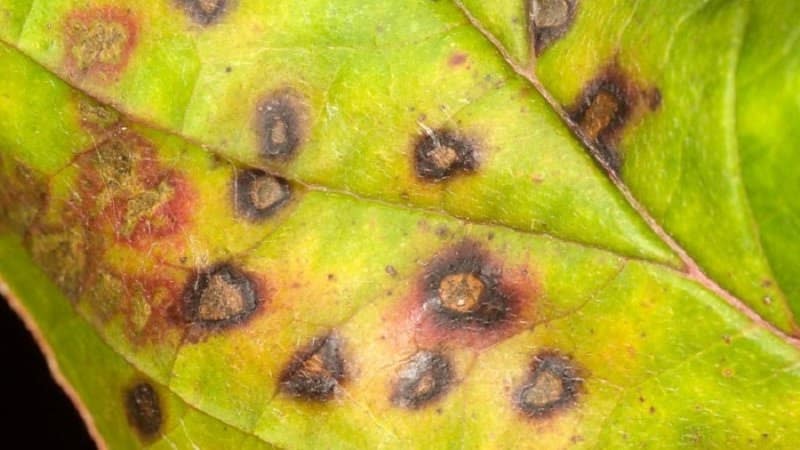
Mosaic
Gooseberry mosaic is a viral disease. Spreads through contaminated garden tools, other plants, and pests.
Bright yellow spots appear along the veins on the leaf blades of an infected plant. Leaves become small and wrinkled. The bushes stop growing and produce a meager harvest.
It is impossible to cure diseased plants. They are dug up and burned.
To prevent infection, be sure to disinfect planting material and garden tools. It is advisable to choose varieties that are resistant to viral infections.
Scab
Scab is a disease caused by fungi and bacteria. The fruits become inedible and fall off. Leaves fall, shoot development slows down.
The following symptoms indicate damage:
- brown spots appear on leaves and shoots;
- the fruits are covered with green and brown growths;
- the berries become deformed and peel;
- leaves fall.
For prevention and treatment, plants are treated with Fitosporin.
